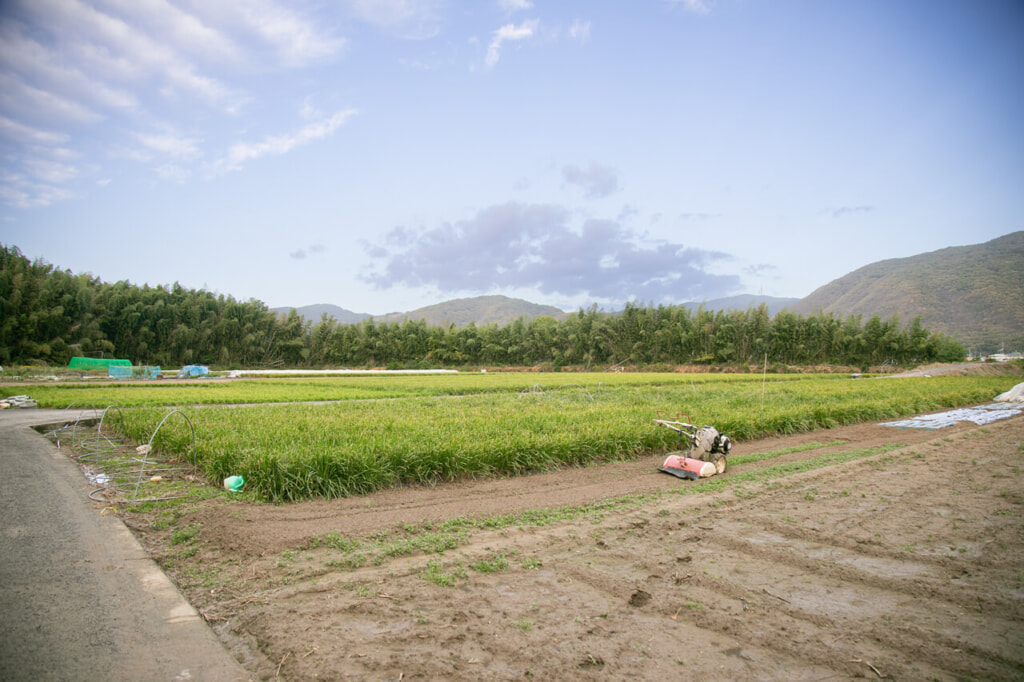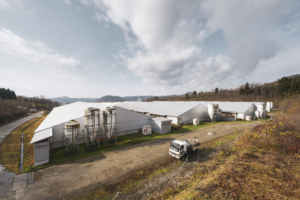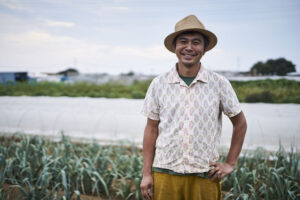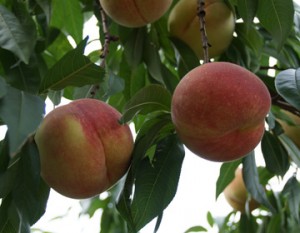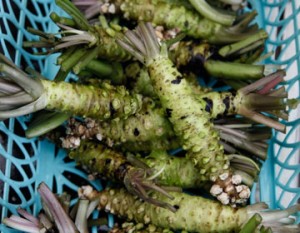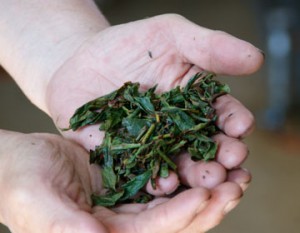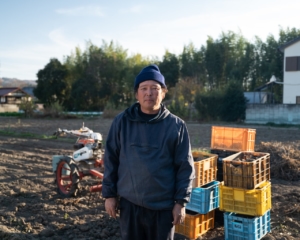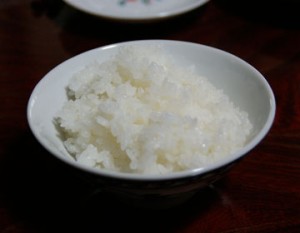Okayama Prefecture boasts the largest production of yellow chives in Japan. It is less peculiar than green chives and has a crispy texture in its softness, making it a popular ingredient in high-end Japanese and French cuisine. Arch Farm Co., Ltd. in Okayama City, Okayama Prefecture, has taken over the production of yellow chives from its predecessor. Teruyoshi Ueda, president of the company, says that the greatest appeal of Okayama’s yellow chives is their sweetness.
Yellow chives from Okayama, the largest producer in Japan
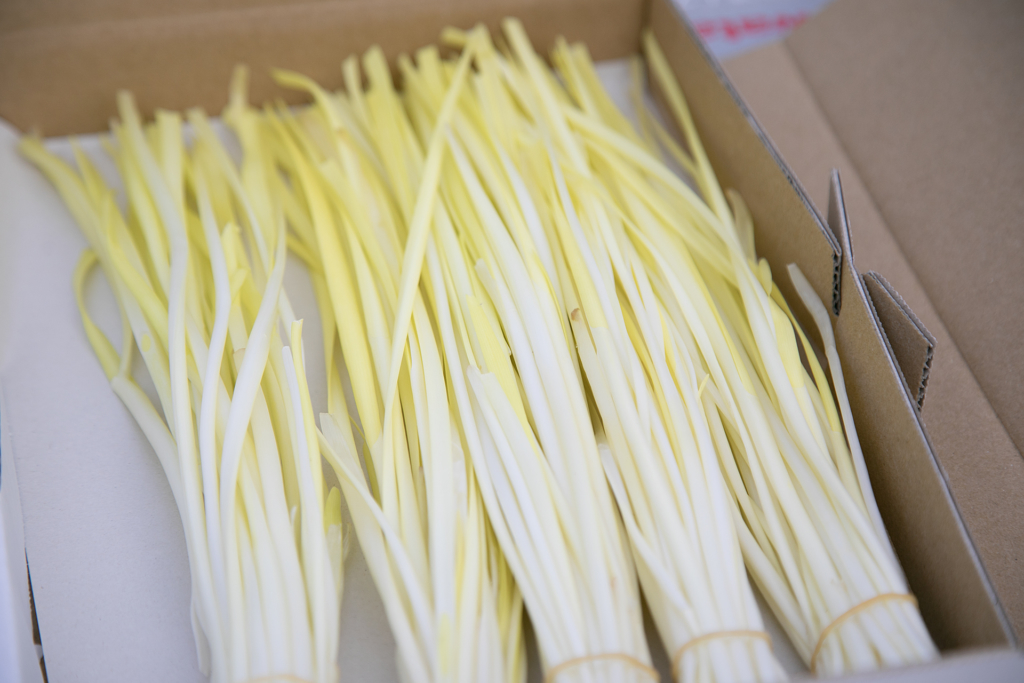
Arch Farm’s farm is located in the southern part of Okayama Prefecture, about 8 km from the center of Okayama City. The Asahikawa River, a first-class river, flows nearby, and the area is surrounded by mountains. Most of the yellow chives produced in Okayama Prefecture, which boasts the largest production in Japan, are grown by 20 yellow chive farmers on approximately 10 hectares of farmland in and around the Mousa district of Okayama City’s Kita Ward. The typical climate of “sunny Okayama,” with low precipitation and long hours of sunlight, and the sandy loam soil in this area make it an ideal location for growing yellow chives.
What is yellow chives in the first place?
Yellow chives are not a special variety, but a green chive covered with a black plastic sheet and grown without sunlight. It is similar to growing white asparagus from green asparagus seedlings, and is a vegetable grown by softening green chives (a cultivation method in which vegetables are grown under shaded conditions to improve quality). Because it does not undergo photosynthesis, it retains its flavor components, including amino acids, and has a strong sweetness. The season starts in November and December, when the weather turns cold. It stores flavor during the period when the leaves are trying to grow in order to resist the cold. Green chives are perennial, and can be harvested six times a year from a single plant, usually for two to five years. In contrast, yellow chives are harvested only once a year for two years, and then the plant’s life is over. The price of yellow chives in the market is 2.5 to 3 times higher than that of green chives, and in some cases, 4 times higher.

History of Cultivation in Okayama
There is no clear answer to the question, “Why yellow chives in Okayama?” There is no clear answer to this question. Nevertheless, there is a story that yellow chives were served in the meals of the Okayama clan during the Edo period (1603-1867), and there is a record of their cultivation as early as 1872 (Meiji 5). In the old days, a one-meter hole was dug in the field, chives were placed in it, and the field was covered with soil and bamboo. In the 1960s, plastic sheeting and other materials began to be used for cultivation, and production increased slightly, catching the attention of a market official in Tsukiji, Tokyo. When shipments to Tokyo began, Chinese restaurants began to favor it, and the number of farmers producing yellow chives in Okayama increased.
Ueda’s encounter with yellow chives
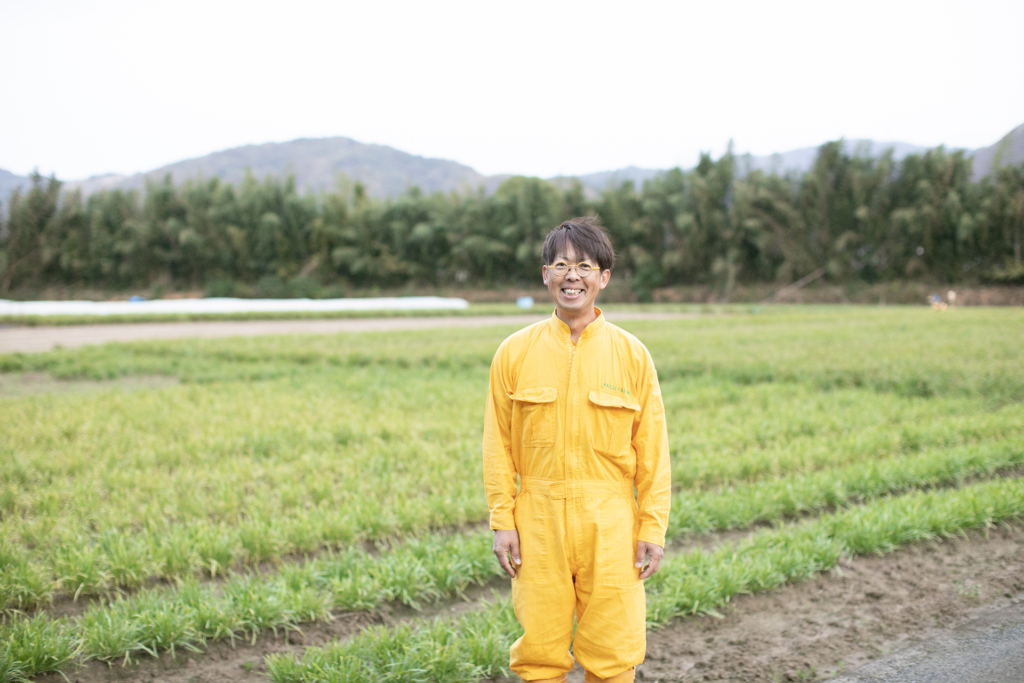
Mr. Ueda, a native of Hyogo Prefecture, first ate yellow chives more than 20 years ago, when he first started dating his wife. When he went to visit his wife’s parents, who run a farm in Okayama, he was told to eat rice and was served miso soup with yellow chives. He was so impressed by the taste that he decided to try his hand at farming. I was 21 years old at the time, but the miso soup with yellow leek changed my life,” he recalls.
Yellow chives grown by Mr. Ueda
Arch Farm currently grows yellow chives in a field of about 3.5 hectares. Mr. Ueda grows the Green Belt and Hyper Green Belt varieties, which have thicker leaves. He sows the seeds in the spring and grows them into strong plants as green chives for 18 months to two years. After the leaves are harvested from the grown plants, he begins the process of growing yellow chives. It takes about two weeks to less than one month to harvest. The leaves are harvested before the sun rises to avoid exposure to sunlight, and after harvesting, they are dried in the sun to prevent the pigment from turning green and to make them bright yellow. These are boxed in units of 10 bunches of about 50 grams each and shipped under the name “Ambassador’s Yellow Chives. Many individual consumers order them online as well as from restaurants of various genres throughout Japan.
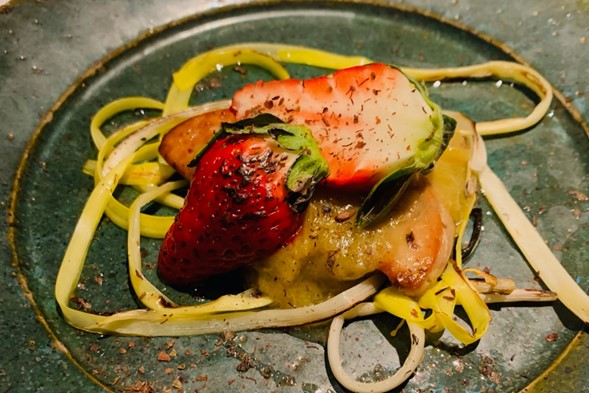
Wearing all yellow to promote the company within and outside of the prefecture.
Mr. Ueda decided to call himself a “yellow chives ambassador” in 2008 after a nearby farmer gave him a yellow work shirt as a gift, and he decided to wear yellow on everything he wears, including his glasses and shoes. He also wanted to make it known inside and outside the prefecture that Okayama is Japan’s largest producer of yellow chives and to raise the value of agriculture. As a result of their PR efforts through collaborations with restaurants, activities at local schools, and media appearances, yellow chives are now used in school lunches in Okayama Prefecture and are increasingly handled by restaurants in the Tokyo metropolitan area and Kyoto-Osaka-Kobe area. Yellow chives were recognized as a representative vegetable of Okayama.
Along with yellow chives, another pillar
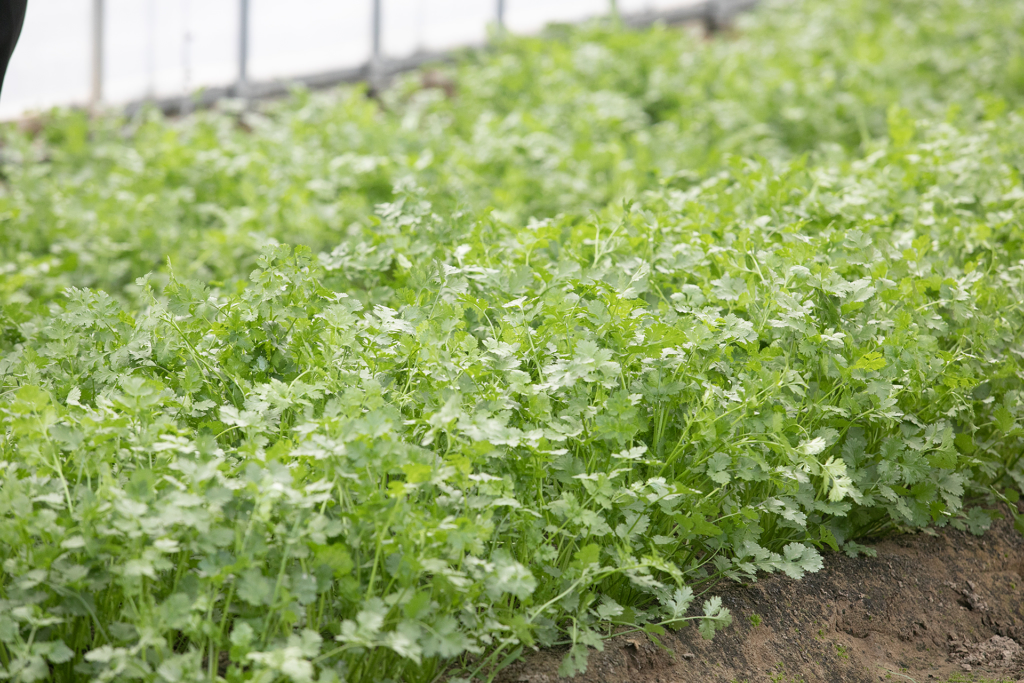
Another pillar of Mr. Ueda’s business is pakuchi, the “yellow chives ambassador. It all started in 1999, when Tokyo Grocery in Tsukiji, Tokyo, recommended growing pak choi and gave him some seeds. At the time, Thai and other ethnic cuisines were enjoying a boom, and demand for pak choi was on the rise. However, few farmers in Japan were producing it. So, with the aim of avoiding continuous cropping of chives, he alternated the cultivation of chives and pak choi, and found that both had positive effects.
Growing pak choi, which I didn’t like.
However, Mr. Ueda was not fond of pak choi, so he decided to grow 10 varieties of pak choi, focusing on the only one he could eat that had a mild aroma and little peculiarity. For the first two years, the market did not pay much attention to it, but after making improvements such as thickening the roots to keep them fresh, the quality of the pak choi gradually began to be appreciated. The aroma is gentle and sweet, with a light pungency like that of celery or carrot leaves. The leaves can be used in salads, egg dishes, meat dishes, and pasta, while the roots can be fried in olive oil for maximum sweetness. The taste of pak choi was created because I was not good at it. Recently, 11 greenhouses dedicated to pak choi have been constructed, and production is being expanded in order to let even more people know the taste of Arch Farm’s pak choi, which has been protected by home-grown seeds.
I want to be one of the hard-working farmers.
Mr. Ueda incorporated his farm in 2018 and named his company Arch Farm. When he first came to Okayama, he was impressed by the arch-shaped Ohara Bridge over the Asahikawa River, which runs near his farm, and his desire to farm as a bridge connecting people and land. Immediately after incorporation, the fields were submerged by the torrential rain disaster in western Japan, but they were restored to normal surprisingly quickly. The chives are strong. The yellow color has supported me so far, and I want to continue to do it even as I get older. I would be happy if I could be involved in farming with my daughter and son, and I want to be one of the farmers working hard across the country.
